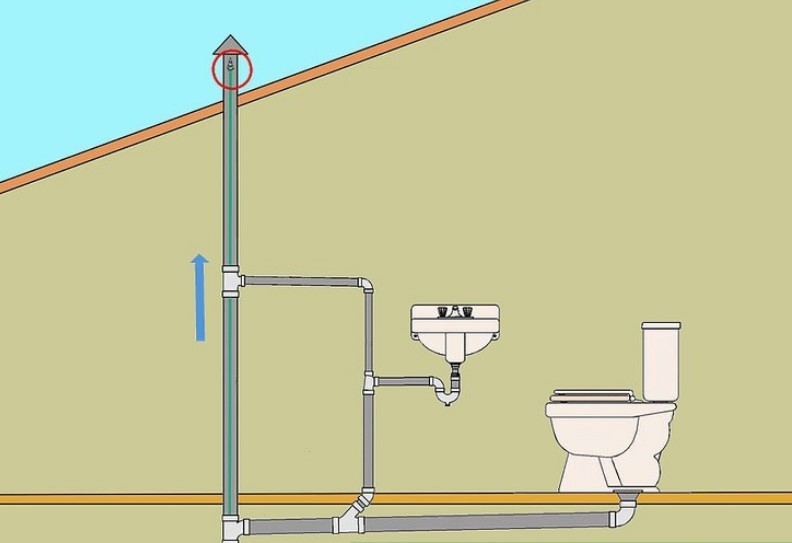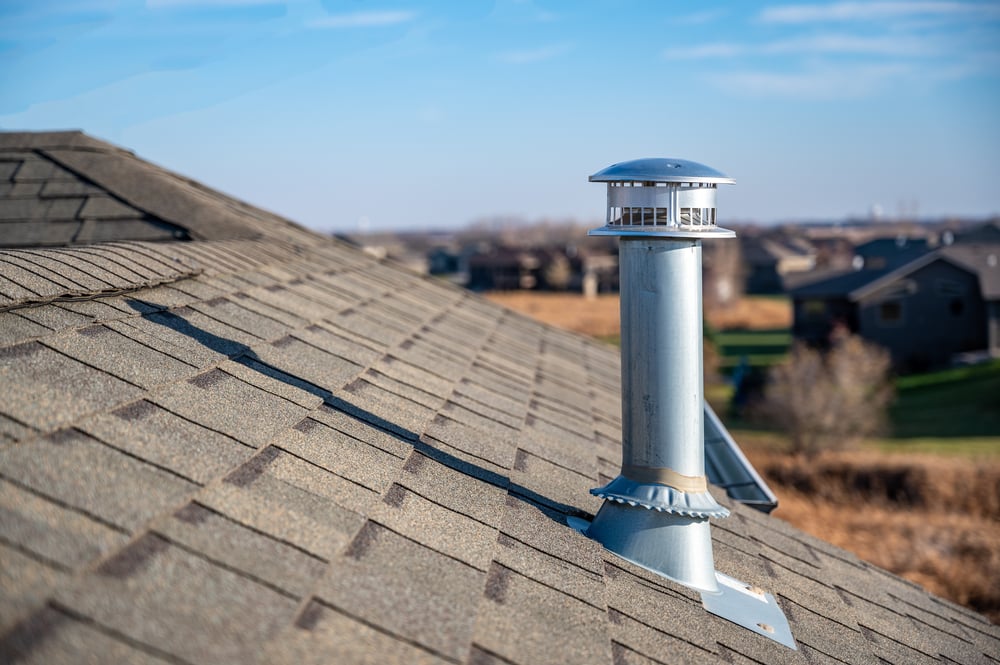The Value of Ventilation in Your Home's Plumbing Systems
The Value of Ventilation in Your Home's Plumbing Systems
Blog Article
The publisher is making a few good points on What Is a Plumbing Vent and Why Is It Important in general in this content in the next paragraphs.

Proper ventilation in pipes systems is usually ignored, yet it is essential for keeping the capability and safety of your home's pipes. Ventilation aids control atmospheric pressure, prevent the build-up of unsafe gases, and make sure the reliable removal of waste. In this guide, we will discover the significance of appropriate plumbing ventilation, exactly how it works, and the benefits it offers your plumbing system.
Comprehending Air Flow in Pipes
Ventilation in plumbing refers to the network of pipelines that allow air to stream via the drainage system. These vents serve several functions, consisting of controling air pressure within the pipelines, avoiding sewer gases from entering the home, and aiding in the smooth circulation of wastewater.
Just How Ventilation Functions in Plumbing Solutions
Air Pressure Policy
Appropriate air flow keeps balanced atmospheric pressure within the plumbing system. When water flows through pipes, it displaces air. Without adequate ventilation, this displacement can produce unfavorable stress, resulting in slow drains pipes or siphoning of water from catches, which can trigger undesirable odors to seep right into the home.
Preventing Sewer Gas Build-up
One of the most critical functions of pipes vents is to stop drain gases, such as methane and hydrogen sulfide, from accumulating within the home. These gases can present major wellness dangers and are highly flammable. Vent pipes enable these gases to get away safely outdoors.
Assisting in Waste Removal
Ventilation assists in the effective elimination of wastewater by preventing airlocks in the drain system. When air can stream openly through the vents, it allows water and waste to flow efficiently with the pipes, minimizing the risk of clogs and back-ups.
Kinds Of Plumbing Vents
Main Stack Vent
The main stack air vent, also called the air vent pile, is the key air vent in a plumbing system. It expands from the primary drain align through the roof, enabling gases to get away and fresh air to enter the system.
Branch Vent
Branch vents link to the primary stack vent and serve individual fixtures, such as sinks, toilets, and showers. These vents guarantee that each component has appropriate air flow to work properly.
Air Admittance Valve (AAV).
An Air Admission Valve (AAV) is a one-way shutoff that permits air to enter the plumbing system without the demand for a standard vent pipeline extending via the roof. AAVs are frequently utilized in restorations or locations where setting up a common air vent is impractical.
Signs of Poor Air Flow in Plumbing.
Slow Draining Fixtures.
If your sinks, tubs, or commodes are draining pipes slowly, it could be an indicator of bad air flow. Poor air circulation can develop a vacuum effect, making it difficult for water to drain pipes appropriately.
Gurgling Sounds.
Gurgling noises coming from drains are frequently an outcome of air being sucked with water catches due to unfavorable stress in the pipes. This is a clear indicator of not enough ventilation.
Unpleasant Odors.
Sewer odors inside your home are a red flag that your plumbing system is not properly ventilated. This could mean that sewage system gases are not being effectively aired vent outside, resulting in possibly unsafe problems.
Common Ventilation Errors.
Insufficient Vent Sizing.
Making use of undersized vent pipes can cause inadequate air circulation and stress inequalities in the system. It's essential to utilize vents that meet the specific requirements of your pipes system.
Improper Vent Positioning.
Placing vents as well far from the components they offer can minimize their performance. Appropriate placement makes sure that air can move openly and effectively with the system.
Disregarding Code Requirements.
Building codes supply certain standards for plumbing air flow. Ignoring these codes can cause a system that fails to work properly and may bring about pricey repair work or carcinogen.
Benefits of Appropriate Air Flow.
Enhanced System Efficiency.
Correctly ventilated plumbing systems operate a lot more efficiently, with less clogs, faster draining pipes, and much less pressure on the pipes. This efficiency extends the life expectancy of the pipes system.
Improved Air Quality.
By preventing sewage system gases from entering your home, appropriate ventilation adds to far better interior air high quality, making your living environment healthier and more comfy.
Preventing Water Damages.
Adequate ventilation assists avoid water from being siphoned out of catches, which can lead to sewer gases going into the home and causing water damage gradually.
Steps to Ensure Appropriate Air Flow.
Consulting Plumbing Codes.
Constantly get in touch with regional plumbing codes when developing or changing your plumbing system. These codes provide the essential guidelines for appropriate airing vent and guarantee your system satisfies safety criteria.
Regular Inspection and Upkeep.
Routine inspections can aid recognize possible air flow issues prior to they end up being major troubles. Upkeep jobs, such as cleaning up vent pipes and checking for blockages, are necessary for keeping the system in good working order.
Specialist Installment.
For brand-new installments or major adjustments, it's wise to work with a professional plumber. They have the expertise to make certain the ventilation system is properly created and mounted according to code.
Final thought.
Correct ventilation is a crucial element of any pipes system, ensuring that it works successfully and safely. By recognizing the importance of ventilation, recognizing the indications of bad ventilation, and taking steps to preserve your system, you can stop costly concerns and secure your home's air top quality.
4 Things You Should Know About Your Plumbing Vents
What Plumbing Vents Are
Also called a vent stack, a plumbing vent is a vertical pipe attached to your drain line that runs through your roof. The plumbing vent pipe, or plumbing air vent, removes gas and odors from your plumbing system and allows fresh air to enter the pipes, helping the water to flow out of the drain pipes.
What Plumbing Vents Do
Plumbing vents have two basic functions. One of which is to allow unpleasant smelling wastewater and sewer gasses to escape your plumbing system instead of entering your home. Plumbing vent pipes are typically located on roofs, away from windows, to ensure the fumes exit the home completely.
The other function of the plumbing vent is to move fresh air into your plumbing system. This helps move water through every plumbing fixture in your house, like toilets and sink drains. Think of the way in which you need to let a little air into the bottle as you pour soda in order to make the drink flow smoothly.
Different Types of Plumbing Vents
True vent: This is the most common vent option. In simplest terms, a true vent is a vertical pipe attached to your drain line that exits through the roof. They often function as the main vent that other fixtures can connect to. Re-vent pipe or auxiliary vent: Attached to the drain line near specific plumbing fixtures, re-vent pipes run up and over to connect to the main vent. Common vent: Two plumbing fixtures installed on opposite sides of a wall are typically tied into the vent stack using something known as a sanitary cross. Wet vent: This venting option operates as a drain pipe and a vent at the same time. Wet vent drainage systems drain water from one fixture while venting the air from another. Although they’ve been used for over 100 years, wet vent systems have only recently been added to the plumbing code in many areas. If you’re planning on installing one in a bathroom remodel, make sure you check your local code prior to construction. Loop vent: For free-standing fixtures like kitchen island sinks, loop vents are ideal. These vent pipes run under the floor, rise from the P-trap, and create a loop inside the cabinet sink. Air admittance valve: An AAV is a one-way mechanical valve typically installed at the site of the plumbing fixture. AAVs allow venting to occur without having to tie into a larger venting system. They’re ideal for venting fixtures where you aren’t able to easily connect to an existing vent system. Common Plumbing Vent Issues
Although vent pipes typically don’t have water flowing through them, they’re still subject to many typical plumbing issues. For example, clogs are one of the most common problems associated with sewer vent pipes. If your vent pipe gets clogged, all of your plumbing fixtures tied into the vent stack will be affected.
A sink with a slow drain that bubbles and gurgles or a strong sewage smell around your toilet are both indicators that your toilet vent pipe is clogged. Because most vent pipes exit through the roof, old leaves, twigs or even a bird’s nest could be clogging the pipe.
Clogs in your vent pipe system cause a buildup of negative pressure, meaning that water won’t be able to flow out of your home very well. It’s similar to putting your finger over the opening of a straw to trap water inside. When you remove your finger, the water is able to flow out of the straw.
If you suspect you have any blockage in your vent, make sure you have a professional come examine the situation. Left unchecked, a blocked air vent can lead to other costly repairs, like leaks and sediment buildup.
Under Pressure
Pipe vents are essential aspects of a home’s plumbing system. Owning a home means learning about all sorts of things you never put much thought into before. But by understanding as much as you can about the important systems of your home, you can keep those budgets intact and those anxiety levels low.
https://www.homeserve.com/en-us/blog/home-improvement/plumbing-vents/

I am just very interested in Why Plumbing Air Vents Are Important and I hope you enjoyed our entry. Sharing is good. You never know, you may very well be helping someone out. We take joy in your readership.
Book My Estimate Report this page